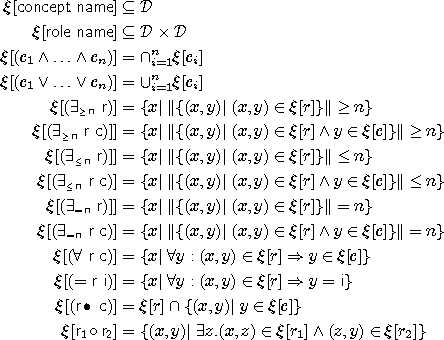Description logic
Description Logics (English description logics ), sometimes also called terminological logics, are a family of languages for knowledge representation. Most description logics are a subset of first-order predicate logic, as opposed to this but decidable. This allows to include a description logic, ie to gain new knowledge from existing knowledge (see Conclusions ).
Formally, one divides a description logic usually in a Terminological Box ( TBox ) and assertional a box ( ABox ). The TBox this contains the knowledge about the concepts of a domain, the terminological knowledge. The ABox, however, contains the knowledge about entities, or instances of these concepts, and their relationships with each other, and represents the state of the modeled world.
Description logics gain a meaning in the context of ontologies and the Semantic Web. Ontology languages such as DAML OIL and OWL have - as well as description logics - a well - defined syntax that can be mapped, for example, to the description logic SHOIN (D). With the description logic as the base adds to a close on ontologies, which is essential for the use of ontologies in the Semantic Web.
The emergence of the name " description logic " can be traced to the early 1980s. Previous names are ( in chronological order ):
- Terminological systems,
- Terminological logics,
- Concept languages.
The first description logic-based system was KL -ONE (1985). Other systems followed, among them LOOM (1987 ), BACK ( 1988), KRIS (1991 ), CLASSIC ( 1991), FaCT (1998), RACER (2001) and last KAON 2 ( 2005).










